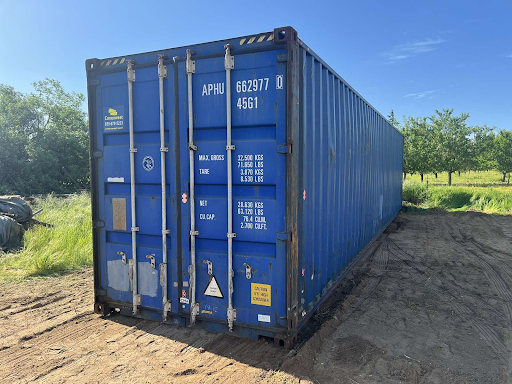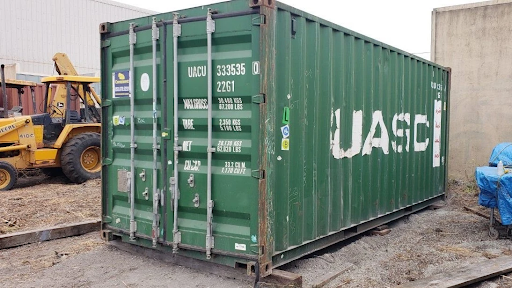Guide to Building a Shipping Container Houseboat
Get a quoteBuilding a Shipping Container Houseboat
Key Takeaways
- Building a houseboat with a shipping container has benefits like durability, cost-effectiveness, and an appealing aesthetic.
- Shipping containers are weather-resistant and can withstand harsh conditions.
- Secure the necessary permits and plan your design carefully to avoid legal issues.
- Conexwest provides high-quality shipping containers and comprehensive fabrication services.
Why Build a Shipping Container Houseboat
- Cost-Effectiveness: Shipping containers can be purchased for relatively low prices. This affordability extends to construction costs, as fewer building materials and less labor are required compared to traditional homes.
- Durability: Shipping containers are made from strong corten steel that can withstand harsh weather and endure the rigors of being on the water.
- Customizability: Their modular design allows for various layouts, sizes, and configurations, which makes it simple to adapt the space as needs change over time.
- Mobility: One of the most significant advantages of using shipping containers for houseboats is their inherent portability. They can be transported to different locations for flexibility in living arrangements.
- Sustainability: Using second-hand shipping containers contributes to recycling efforts and reduces environmental impact. Additionally, these homes can be designed with eco-friendly features, such as solar panels and efficient insulation to further boost their sustainability.
- Quick Construction: Houseboats made from shipping containers can be constructed relatively quickly, often in under a month when working with an experienced contractor.
- Unique Aesthetic: A shipping container houseboat has a distinctive and modern aesthetic that stands out from traditional homes.
- Low Maintenance: Shipping containers require minimal maintenance compared to traditional homes. Their strong construction means they are less prone to issues like rust or leaks, which can lead to lower long-term upkeep costs.
Conexwest, a leader in shipping and storage solutions based in Northern California, offers new, used, and refurbished containers from 10ft to 45ft, with fast delivery within 3-7 days and container fabrication options like adding shelves and locks. We serve over 10,000 customers nationwide, including prestigious clients like the U.S. Navy and Google. As an ISO 9001 and AWS-certified company, we ensure top quality and competitive pricing. |
Steps to Building a Shipping Container Houseboat
Step 1: Permits and Planning
Check local regulations regarding shipping container homes, as these can vary significantly by location. Obtain building permits and make sure your design complies with zoning laws.
If your project involves multiple containers, it is recommended to take expert help for creating a structurally sound design. Planning also includes deciding on the layout, dimensions, and features of your houseboat.
Step 2: Purchase a Shipping Container

Conexwest helps you pick the right container for your needs and budget
Consider the size and condition of the container; one-trip containers are often in better shape than used ones. Depending on your design, you may need one or multiple containers. Check that the containers are suitable for modification and can support the intended weight and structure of your houseboat.
Step 3: Prepare the Foundation
Preparing a solid foundation is critical for stability on water. Depending on your design, you may use a barge or pontoon as the base. Options for the foundation include reinforced concrete, styrofoam blocks, or recycled oil drums.
Check that the foundation is strong enough to support the weight of the container and any additional loads. It’s also important to include a vapor barrier to protect against moisture, which can lead to corrosion.
Step 4: Modify the Container
Modifying the shipping container involves installing windows, doors, and ventilation. Use appropriate tools like plasma cutters or angle grinders for precise cuts. Reinforce the structural integrity of the container by adding steel frames around the openings so that the container maintains its strength after modifications.
Pro Tip: It’s better to use a professional fabrication service than modifying the container on your own for the utmost safety and quality.
Step 5: Install Utilities
Plan the layout for plumbing and electrical systems while complying with safety regulations. Install plumbing for water supply and drainage, and set up electrical wiring for power. Consider adding energy-efficient systems, such as solar panels, to boost sustainability.
Step 6: Insulation and Interior Finishing
For comfort, insulate the container effectively. Insulation helps regulate temperature and reduces energy costs. After insulation, focus on interior finishing, which includes installing flooring, walls, and ceilings. Choose materials that suit your aesthetic preferences and functional needs. This step transforms the container into a cozy living space.
Step 7: Place the Container on the Foundation
Once modifications and interior work are complete, it’s time to place the container on the prepared foundation. This can be done using a crane or delivery truck, depending on the weight and size of the container. The placement should be accurate and stable. So, make any necessary adjustments to align it properly with the foundation.
Step 8: Final Inspections and Sign-Off
After construction is complete, conduct a final inspection to see if everything meets building codes and safety standards. This may involve inspections by local authorities or experts to check the structural integrity, utilities, and overall safety of the houseboat. Address any issues identified during the inspection before moving in.
Common Mistakes to Avoid When Building a Shipping Container Houseboat
- Ignoring Weight Distribution: Not considering how weight is distributed can lead to stability issues. Check that heavy appliances and furniture are placed strategically to maintain balance and prevent tipping.
- Using Poor-Quality Containers: Purchasing containers in poor condition can result in structural issues and increased maintenance costs. Always inspect containers thoroughly before buying so they are sound and free from significant damage.
- Cutting Too Much Steel: Removing excessive amounts of steel for windows and doors can compromise the container's structural integrity. Limit cuts and reinforce areas where significant modifications are made.
- Underestimating Costs: Many people fail to account for all expenses, which can cause budget overruns. Create a detailed budget that includes materials, labor, permits, and unexpected costs to avoid financial strain.
- Choosing the Wrong Location: Selecting a poorly sheltered location can expose the houseboat to harsh weather conditions, which makes it uncomfortable and potentially damaging. Look for sheltered spots to minimize exposure to waves and wind.
How Conexwest Can Help You Build a Shipping Container Houseboat

Conexwest has a large selection of shipping containers in different sizes.
Providing High-Quality Shipping Containers
The foundation of any successful shipping container houseboat is the containers themselves. We have a wide selection of high-quality, durable shipping containers in various sizes. Our containers are carefully inspected so they meet the highest standards of safety to give you peace of mind when working on your houseboat project.
Customizing Your Container
One of the most exciting aspects of building a shipping container houseboat is the ability to customize it. Our team of experienced technicians will work closely with you to modify your container with:
- Multiple container configurations for larger living spaces
- Windows and doors for optimal natural light and ventilation
- Integrated storage solutions to keep your houseboat organized
- Sustainable features like solar panels and water filtration systems
Integrating Utilities and Systems
Living on the water means you'll need to be self-sufficient. We can help you design and install:
- Plumbing for fresh water supply and waste management
- Electrical systems for lighting, appliances, and entertainment
- Heating and cooling systems to maintain a comfortable living environment
Ongoing Support and Resources
If you need additional containers for expansion, maintenance tips, or advice on upgrades, our team is here to help. We also provide resources and information on best practices for maintaining your shipping container houseboat so it remains a comfortable and secure living space.
If you are ready, click the link below to discuss your requirements and get a free quote.
Frequently Asked Questions (FAQs)
- How long does it take to build a shipping container houseboat?
The time it takes to build a shipping container houseboat can vary depending on the complexity of the design and the level of customization. However, with experienced contractors and proper planning, the construction can often be completed in under a month. Factors such as obtaining permits, modifying the containers, and installing utilities will all impact the timeline.
- Do I need special permits to dock my houseboat?
Yes, docking a houseboat typically requires special permits and approvals from relevant authorities. The exact requirements can vary depending on your location and the regulations in place. It's essential to check with local authorities and obtain the necessary permits so your houseboat complies with all legal requirements.
- What maintenance does a shipping container houseboat require?
Regular maintenance will help keep your houseboat in excellent condition and prevent any potential issues. Key maintenance tasks include:
- Inspecting and repairing any rust or corrosion on the container's exterior.
- Checking and maintaining the plumbing and electrical systems.
- Keeping the waterproofing and insulation intact.
- Cleaning and maintaining the interior and exterior surfaces.
- Can I install solar panels on my houseboat?
Yes, installing solar panels on your shipping container houseboat is a great way to generate renewable energy and reduce your reliance on traditional power sources. Solar panels can provide electricity for lighting, appliances, and other electrical needs.
When installing solar panels, consider factors such as the available space on the roof, the energy requirements of your houseboat, and the orientation of the panels to maximize sunlight exposure.
- What services does Conexwest provide?
- Renting storage containers for business or home use
- Selling new and used shipping containers for various projects
- Customizing containers for various needs like cold storage, offices, and workshops
- Providing delivery, hauling, and depot storage services
- Repairing damaged containers
